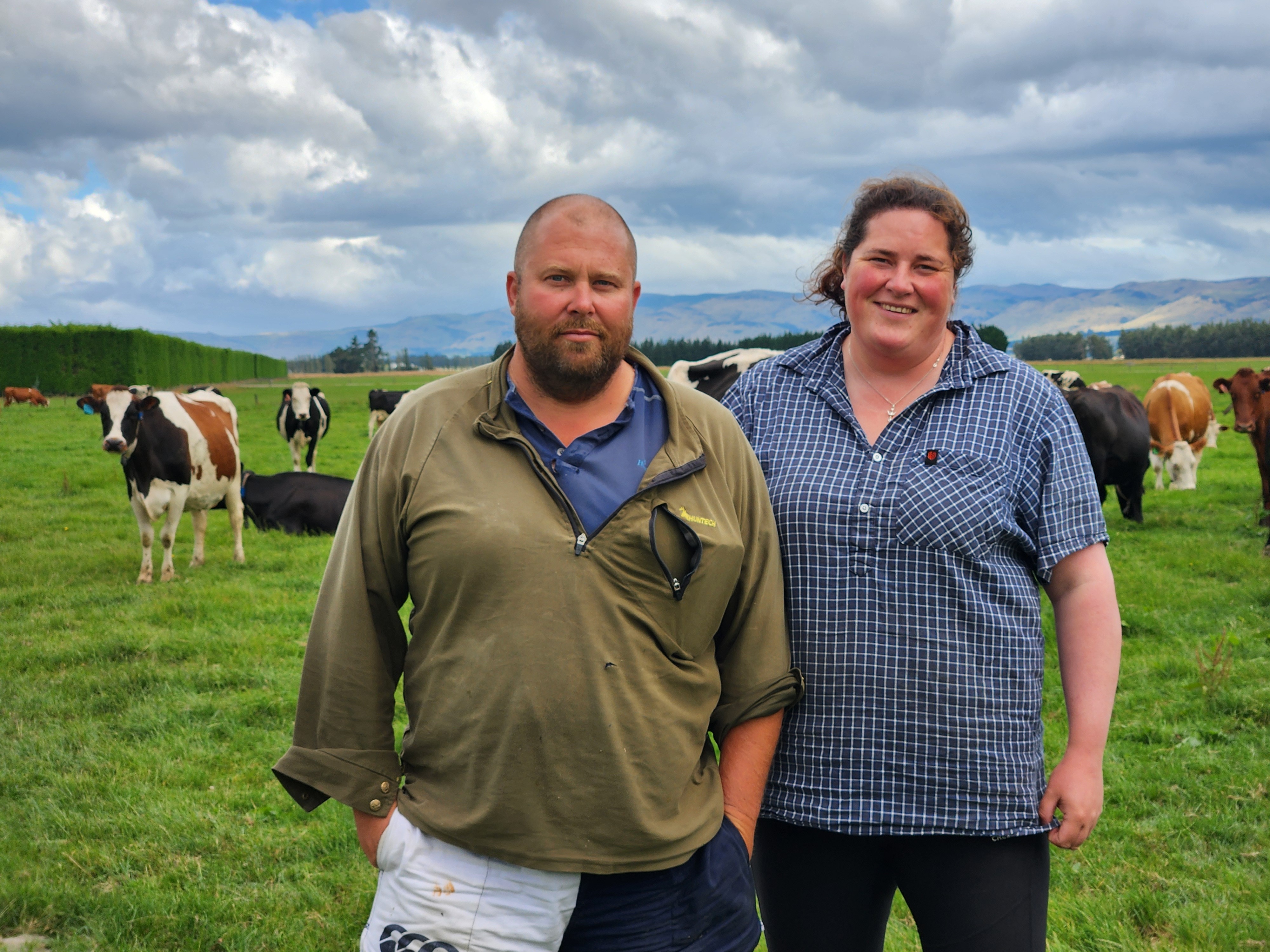“We’ve gone from 480 kgMS/cow to a target of 600 kgMS/cow this season,” says Anieka. “Our system hasn’t changed, but our cows have. That comes down to the breeding decisions we’ve made.”
The couple milks 655 Friesian-cross cows, averaging 520-530kg liveweight, on their Southland farm. Their breeding strategy prioritises production, udder, capacity, stature, and fertility. With no bulls used in their mating programme, Anieka relies solely on artificial insemination (AI) on their top 50 heifers from their best cows to accelerate genetic gain, using a double PG (prostaglandin) programme.
“Our early cows were big but didn’t have great udders, and they didn’t last long in the herd,” she says. “With support and expertise from CRV, we’ve worked hard to breed Friesian-cross cows that are productive over multiple lactations. Now, we’re seeing the results.”
Despite the challenges of Southland’s wet springs, the couple is achieving strong reproductive results, including a 78% six-week in-calf rate, a 90% submission rate at three weeks, and a reduced empty rate of 13%.
“Breeding is one of the most important decisions a farmer can make, so it’s worth taking the time to select bulls with the right traits to achieve your goals,” says Aneika.
A strategic approach to breeding
The Templers’ breeding programme is carefully structured to maximise genetic gains. Anieka follows a 10-week AI programme, starting with four weeks of AB for replacements, followed by two weeks using CRV Fertabull Charolais, and finishing with four weeks of LIC SGL (short gestation length) bulls.
She also incorporates global genetics from the Netherlands to help meet their breeding goals. With extensive experience using different types of global outcross, she carefully selects genetics that complement their Friesian-cross herd, ensuring long-term gains in production, fertility, and overall cow health.

